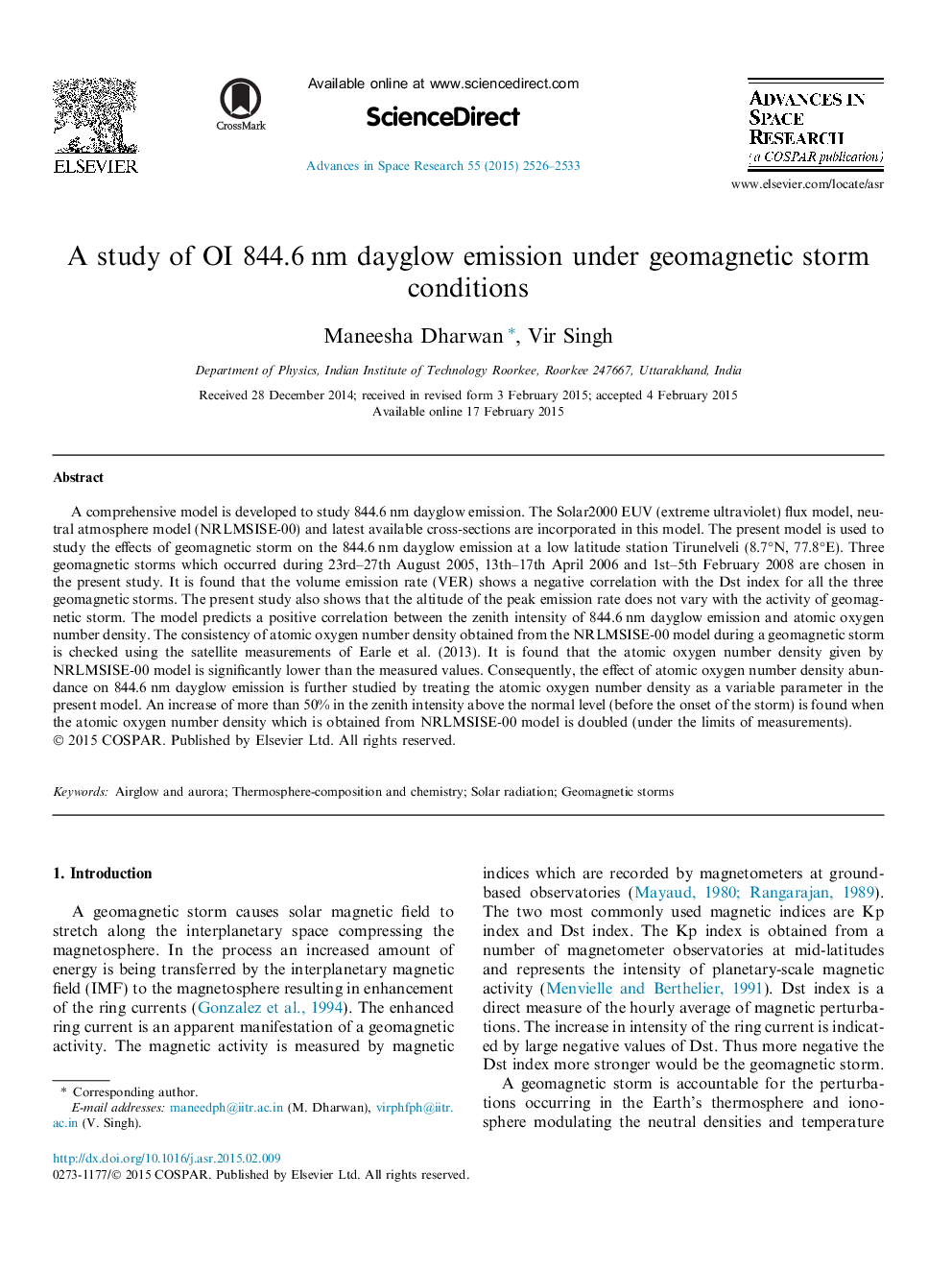| Article ID | Journal | Published Year | Pages | File Type |
|---|---|---|---|---|
| 1763400 | Advances in Space Research | 2015 | 8 Pages |
A comprehensive model is developed to study 844.6 nm dayglow emission. The Solar2000 EUV (extreme ultraviolet) flux model, neutral atmosphere model (NRLMSISE-00) and latest available cross-sections are incorporated in this model. The present model is used to study the effects of geomagnetic storm on the 844.6 nm dayglow emission at a low latitude station Tirunelveli (8.7°N, 77.8°E). Three geomagnetic storms which occurred during 23rd–27th August 2005, 13th–17th April 2006 and 1st–5th February 2008 are chosen in the present study. It is found that the volume emission rate (VER) shows a negative correlation with the Dst index for all the three geomagnetic storms. The present study also shows that the altitude of the peak emission rate does not vary with the activity of geomagnetic storm. The model predicts a positive correlation between the zenith intensity of 844.6 nm dayglow emission and atomic oxygen number density. The consistency of atomic oxygen number density obtained from the NRLMSISE-00 model during a geomagnetic storm is checked using the satellite measurements of Earle et al. (2013). It is found that the atomic oxygen number density given by NRLMSISE-00 model is significantly lower than the measured values. Consequently, the effect of atomic oxygen number density abundance on 844.6 nm dayglow emission is further studied by treating the atomic oxygen number density as a variable parameter in the present model. An increase of more than 50% in the zenith intensity above the normal level (before the onset of the storm) is found when the atomic oxygen number density which is obtained from NRLMSISE-00 model is doubled (under the limits of measurements).
